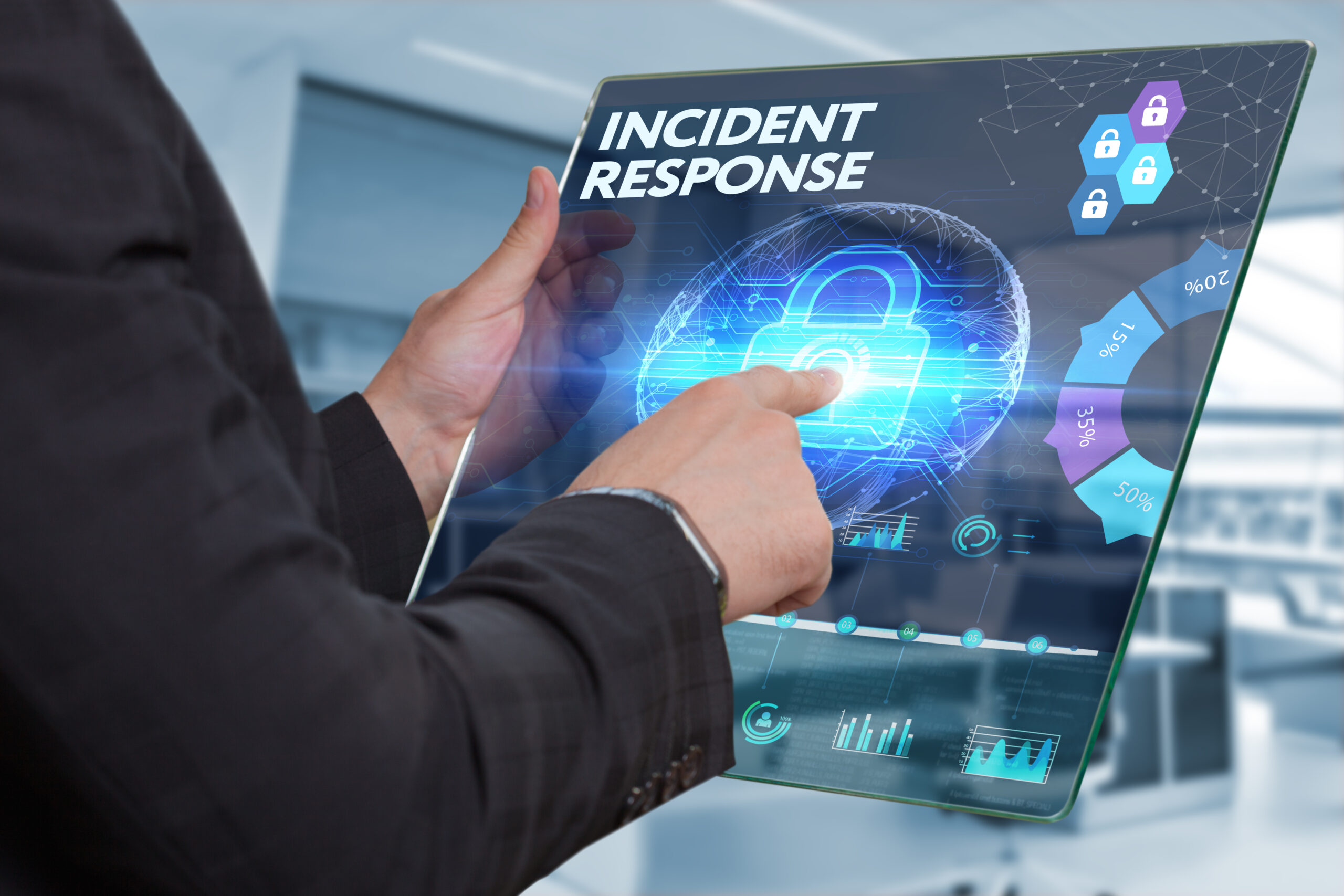What is Security Incident Response?
Security incident response is the systematic approach to handling a security breach or cyberattack. The objective is to manage the situation in a way that limits damage and reduces recovery time and costs while preserving the organization’s reputation.
An effective security incident response strategy involves preparing for the known and unknown, promptly identifying security incidents, and establishing best practices to block intrusions before they cause significant harm.
Key Elements of Security Incident Response:
Preparation: Establishing and maintaining an effective security incident response capability.
Detection and Analysis: Identifying and understanding the nature of the security incident.
Containment, Eradication, and Recovery: Stopping the incident, removing the threat, and restoring normal operations.
Post-Incident Activity: Learning from the incident to improve future response efforts.
Why is Security Incident Response Important?
Uncontrolled security incident activity can escalate quickly, leading to severe consequences like data breaches, system outages, and high recovery costs. By responding promptly to security incidents, organizations can:
Minimize Financial and Reputational Losses: Quick response limits the extent of damage.
Mitigate Vulnerabilities: Addressing weaknesses that were exploited during the incident.
Restore Services and Operations Swiftly: Ensuring minimal downtime and disruption.
Reduce the Risk of Future Incidents: Implementing lessons learned to prevent recurrence.
Impact of Ineffective Security Incident Response:
Downtime and Service Disruption: Critical business operations may halt.
Regulatory Fines and Legal Fees: Non-compliance with data protection laws can result in penalties.
Data Recovery Costs: High expenses involved in retrieving lost or compromised data.
Brand Damage: Loss of customer trust and loyalty, potentially impacting revenue.
Components of a Security Incident Response Plan:
A security incident response plan is a comprehensive document outlining the procedures to follow when a security incident occurs. Key components of an effective plan include:
Security Incident Response Methods and Strategies: Clearly defined steps and methodologies to handle different types of security incidents.
Support for Broader Organizational Mission: Aligning security incident response activities with the organization’s overall mission and goals.
Activity Breakdown: Detailed activities required for each stage of security incident response.
Roles and Responsibilities: Clear definitions of who is responsible for each task.
Communication Channels: Effective communication protocols within the team and with the rest of the organization.
Performance Metrics: Metrics to evaluate the effectiveness and efficiency of the security incident response.
Security Incident Response Steps:
A typical security incident response process involves several crucial steps:
Early Detection: Identifying the security event through monitoring systems and alerts.
Techniques: Security Information and Event Management (SIEM) systems, Intrusion Detection Systems (IDS).
Goal: Quickly spot anomalies that may indicate a breach.
Analysis: Reviewing alerts, identifying indicators of compromise, and determining the scope of the threat.
Techniques: Threat Intelligence Platforms, User and Entity Behavior Analytics (UEBA).
Goal: Confirm the security incident and understand its nature.
Prioritization: Assessing the impact on business operations and prioritizing the response.
Criteria: Data sensitivity, business impact, threat level.
Goal: Allocate resources effectively to handle the most critical incidents first.
Notification: Informing relevant internal and external parties about the incident.
Internal Parties: IT team, management, affected departments.
External Parties: Customers, partners, regulators, law enforcement.
Goal: Ensure transparency and compliance with legal requirements.
Containment and Forensics: Stopping the spread of the incident and collecting evidence for further investigation.
Short-Term Containment: Immediate actions to limit damage (e.g., disconnecting affected systems).
Long-Term Containment: Ensuring the threat is fully removed before restoring normal operations.
Forensics: Gathering data to understand how the incident occurred and to support legal actions if needed.
Recovery: Eradicating threats, restoring systems, and ensuring they are secure.
Actions: Removing malware, rebuilding systems, restoring data from backups, applying patches.
Goal: Return to normal operations without the risk of re-infection.
Incident Review: Evaluating the response to improve future incident handling and prevent recurrence.
Activities: Conducting a post-mortem analysis, updating the incident response plan, training staff.
Goal: Learn from the incident and enhance the organization’s security posture.
Security Incident Response Frameworks:
Several established frameworks guide organizations in developing standardized security incident response plans:
1.SANS Security Incident Response Framework:
The SANS framework divides the security incident response process into six phases:
Preparation: Establishing policies, procedures, and agreements.
Identification: Determining whether an event is actually a security incident.
Containment: Limiting the impact of an incident.
Eradication: Removing the cause of the incident.
Recovery: Restoring systems to normal operation.
Lessons Learned: Reviewing the incident to improve future response.
2.NIST Security Incident Response Framework:
The NIST framework condenses the security incident response process into four phases:
Preparation: Developing and maintaining an incident response capability.
Detection and Analysis: Identifying and analyzing incident indicators.
Containment, Eradication, and Recovery: Containing the incident, removing the cause, and recovering operations.
Post-Incident Activity: Learning from the incident to improve future response efforts.
Incident Response Plan Templates:
Developing an incident response plan can be challenging. Templates provide structure and direction. Here are a few useful templates:
Incident Response Playbooks:
Incident response playbooks offer standard steps and procedures for responding to and resolving incidents. They typically include:
Runbooks: Detailed instructions for handling specific types of incidents.
Checklists: Ensure all necessary steps are followed during an incident response.
Templates: Predefined documents to facilitate communication and documentation.
Training Exercises: Simulations to prepare the team for real incidents.
Security Attack Scenarios: Hypothetical situations to practice responses.
Incident Response Tool Categories:
Implementing the right tools is crucial for an effective security incident response strategy. Here are some key categories of security incident response tools:
Security Orchestration, Automation, and Response (SOAR):
Function: Automates and orchestrates response processes across various tools.
Benefits: Reduced response time, enhanced efficiency, consistency, and scalability.
Examples: Splunk Phantom, Palo Alto Networks Cortex XSOAR, IBM Resilient.
User and Entity Behavior Analytics (UEBA):
Function: Analyzes user and entity behavior to identify anomalies.
Benefits: Early detection, comprehensive monitoring, reduced false positives.
Examples: Splunk User Behavior Analytics, Exabeam Advanced Analytics, Varonis DatAlert.
Security Information and Event Management (SIEM):
Function: Aggregates and analyzes log data for real-time monitoring and alerts.
Benefits: Centralized monitoring, real-time alerts, historical analysis.
Examples: Splunk Enterprise Security, IBM QRadar, ArcSight ESM.
Endpoint Detection and Response (EDR):
Function: Monitors endpoint activities to detect and respond to threats.
Benefits: Real-time detection, comprehensive visibility, forensic capabilities.
Examples: CrowdStrike Falcon, Carbon Black, Microsoft Defender for Endpoint.
Extended Detection and Response (XDR):
Function: Integrates multiple security products for unified visibility and response.
Benefits: Unified security operations, enhanced detection, streamlined response.
Examples: Palo Alto Networks Cortex XDR, Trend Micro XDR, FireEye Helix.
Network Traffic Analysis (NTA):
Function: Analyzes network traffic to detect anomalies and potential threats.
Benefits: Comprehensive network visibility, anomaly detection, proactive threat hunting.
Examples: Darktrace, Cisco Stealthwatch, Vectra AI.
Threat Intelligence Platforms (TIP):
Function: Aggregates threat intelligence to understand and respond to threats.
Benefits: Enhanced threat awareness, improved decision-making, integration.
Examples: Anomali ThreatStream, ThreatConnect, Recorded Future.
Accelerate Incident Response with Guardian:
Implementing the right tools is crucial for an effective security incident response strategy. Here are some key categories of security incident response tools. In the fast-paced world of cybersecurity, rapid incident response is crucial. Guardian, our AI-powered Application Security Posture Management(ASPM) solution, streamlines your response efforts. By centralizing data from diverse security tools, Guardian offers actionable insights to swiftly detect and remediate threats. Ensure your organization stays ahead of evolving risks with Guardian’s protective defense capabilities. Discover how Guardian can enhance your incident response strategy today.
 By: John Abhilash / June 21, 2024
By: John Abhilash / June 21, 2024







Leave a Comment